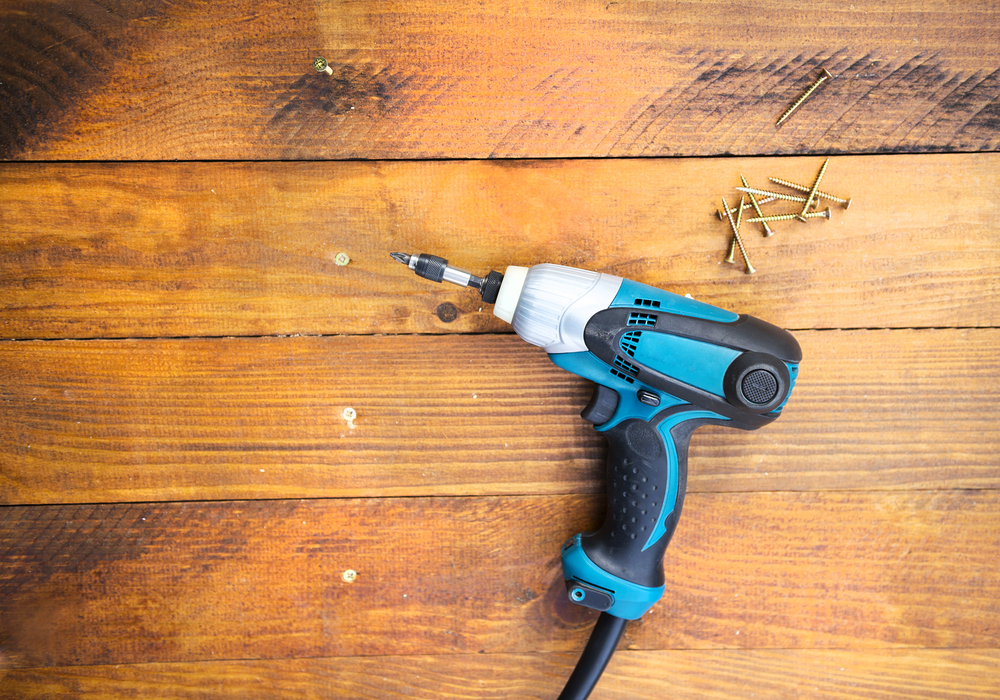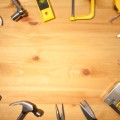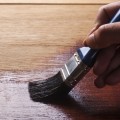How to Fix a Squeaky Hardwood Floor
Have you ever walked through the house late at night, hoping to sneak a spoonful of ice cream or make a plate of leftovers without anyone the wiser, only step on a squeaky floorboard? Squeaks and creaks in hardwood floors are commonplace. Unfortunately, they are an annoyance as well. Regardless of whether or not your hardwood floors are covered with carpeting or you have exposed hardwood floors, there are options available for fixing a squeaky hardwood floor.
It’s important to understand the reason for the squeak before making the decision to fix it. A squeaky hardwood floor is usually caused by floorboards becoming loose. The loose floorboards will either rub together and make the squeaking noise or rub against the subfloor. Loose floor boards that can be felt beneath one’s feet is a floor that is bad disrepair and should be repaired immediately.

Options for Fixing a Squeaky Floor
There are a few options for fixing squeaky floorboards depending on the severity of the squeak and the ability to get to the source of the squeakiness. Getting at the floorboards can be more difficult than it seems and should require patience and proper planning.
Add Lubrication
One quick fix for squeaky floors that will extend the time between needing a more permanent fix is to apply a lubricant between the subfloor and floorboards, or whatever may be causing the squeak. Powdered graphite or talcum powder both are excellent options for lubricating squeaky floorboards.
Sprinkle the powder over the squeaky floorboards. To help the lubricant seep into the floorboards, reactivate the squeaks by walking over the floorboards. You will likely need to repeat the process until the squeaking has subsided. Keep in mind that using a lubricant to quiet a squeaky hardwood floor may not be a permanent fix; you may need to do future applications of lubricant, or you can work at ending squeaky floorboards for good.
Replace Loose or Missing Nails
Nails that have become loose or not having enough nails in a board are other possible reasons for squeaky hardwood floors. If you have access to the subfloor, such as through a basement or crawl space, then you can check for missing nails or nails that were not hammered in properly to see if this could be the root of your problem. You can then clip them with diagonal cutters or properly drive new nails into the floor joists so the floorboards no longer rub against each other.
Add Shims
However, this may not be the fix you need. Once again, if you have access to the subfloor and can visibly see the floorboards, have someone walk across the squeaky area of the floor so that you can see exactly what is causing the squeak. Shims can be hammered into place in order to resolve gaps between the floor boards and subfloor.
Add Extra Support Underneath
Other possible reasons for a squeaky hardwood floor may have to do with poor support or insufficient bridging. In both cases, it may be necessary to insert additional bridging supports or nail blocks to provide added support and fix any sagging from the subfloor or floorboards. You’ll need to measure the exact spacing you’ll need for the bridge support as well as the nail blocks.
When you’re driving nails or screws in from the subfloor, you want the screw or nail to reach the main floorboard – but not to go all the way through and poke out the top. Be careful to choose screws and nails that aren’t too long. Square-drive screws or drywall screws are appropriate screws that will reach the surface floor but not go through the surface.
Fixing Squeaks from Above
Of course, being able to work from the subfloor up has its advantages, but you might not be able to get to the subfloor. In the case of finished ceiling, or if your hardwood floor is covered over with carpeting, it may be necessary to peel back the carpet and work from the top and countersink screws and nails into the boards.
It can be tricky to get the screws or nails in at the correct angle. Measure carefully to ensure you’re at the right angle to meet the wood joists. If you’re unsure about driving nails or screws in from the top of the hardwood floor, carpenter’s glue and a putty knife is also an acceptable solution. Squirt carpenter’s glue in between floor boards and work it in with a putty knife. Place a weight over the area you applied glue to and let it dry. It may be necessary to add additional glue after drying to ensure a proper filling.
While some of these options may rid you of squeaky hardwood, there is the possibility that new squeaks will arise or the fixes you put into place do not fully quiet the hardwood floor. As floors age and the wood dries out, some squeaks will be unavoidable.






Pravin Patel
Hi,
I had local installer put engineering Wood on concrete floor . It’s click clock. Problem is entire floor is cracking ,I don’t see any loose plank anywhere. Can you tell me what could be reason and what can I do to stop it.
BuildDirect Product Expert Team
Hi Pravin,
Thank you for getting in touch! Unfortunately if your floor is cracking that usually means the subfloor is not completely flat and level. You can have a variance of about 1/4″ over an eight foot span but if it is larger than that the floor will crack and squeak. Your only option would be to take the floor up and level the subfloor to ensure the floor stays stable. Please let us know if you have any other questions!
Dawn
This comment/question is based on your response to Barb regarding squeaks and creaks in engineered wood floors. If I am understanding your response correctly, you are saying that these issues cannot be fixed by going into the craw space and screwing from the below the subfloor and into the engineered boards…and that the only option is to replace the floor. I would like to understand why you do not believe this is a feasible option. We had 3/4″ x 5″ engineered flooring installed on top of a full 1″ subfloor and within a week of moving back into the house began noticing squeaks, creaks, popping and in a few places the engineered boards actually deflect a bit when stepped on as well as making the noise. The noises have gotten worse and in more and more places over time…or maybe we are just noticing some of them as we establish new “traffic patterns”. This flooring has been in place for a little over 2 years now. We brought it to the contractor’s attention right away and have remained in contact with them. They are now suggesting having someone go under the house and basically add three rows of 1.5″ screws between each joist in basically an 8″ grid pattern….rather than replacing the whole floor…and that this is an industry accepted fix. While I’m not thrilled with the disruption replacing the flooring would cause, I have my own greater concerns about this alternative in both the short and longer term life of both the engineered wood flooring as well as the subfloor. I would be very interested to hear your reasons why this is not an acceptable course of action with engineered wood flooring. Also, we know there are areas where lack of flatness is an issue and based on my own research, I suspect there are some issues with the nailing schedule and perhaps with the psi used when fastening. This flooring was installed in early spring 2014, we moved in and noticed the issue in early May and by June we became aware of a moisture issue under the house (we live in SC). In July we had the crawl space encapsulated (which according to the Installation Instructions should have been in place prior to the flooring install, but it was not brought to our attention or we would have done it before installation of the floor) and a dehumidifier was also placed in the crawl space. The crawl space was dry in the winter when we began the renovation project. Any feedback will be much appreciated. Thanks!
BuildDirect Product Expert Team
Hi Dawn,
Thank you for getting in touch! When a floor starts squeaking is it mostly due to an uneven subfloor beneath or the floor was not installed properly. To completely fix this the only solution would be to pull it up and re-install according to the manufacturers stated installation guidelines.
The proposed solution from the contractor may remedy the situation to an extent, but due to the fact there were some short comings during the installation (uneven subfloor, moisture, etc.) there is no way to be sure if the issue will not persist or any new problems arise because the integrity of the boards is now in question. Another thing to note is if you nail from below it will most likely void any warranty you have with the floor. I would highly suggest checking the warranty before nailing.
If you have any other questions you can give us a call at 1-877-631-2845.
Barb
Are all these suggestions for solid wood floors? Can these fixes work for engineered floors? I have gaps, squeaks and bounce between boards and my floors are engineered floors. They are thicker so I’m assuming they are better quality engineered flooring.
BuildDirect Product Expert Team
Hi Barb,
Thank you for your inquiry! Unfortunately you can only use these solutions on solid hardwood floors. If your engineered hardwood floor is squeaking that usually means there was an issue with the initial installation or the sub floor beneath is not level. At this point the only option would be to take up the floor and reinstall it or to get an entirely new floor. Please let us know if you have any other questions!
Eunice Peterson
After putting Pledge Lemon Clean on my dust mop and cleaning hard wood floors they
squeak something terrible. Doesn’t matter what shoes ones wears, they squeak absolutely
awful.
Kellie Walker
We had a friend install some laminate floors in our house approximately 3 years ago. They were looking dull and would squeak when you walk on them. I cleaned them with my laminate cleaner and then I put some quick dry wax on them. They are shiny now but the squeaking is still there. I am lost at what to do about this. Please help. The squeaking is unbearable.
Thank you,
Kellie
Gary Sandur
Hi Kellie,
The squeaking boards usually indicate either the subfloor being uneven, or an installation issue. The rule of thumbs is that there can be a 1/4″ variance over a 8ft length anything more than that you will get squeaking of the boards as you are. The other reason as I mentioned may have something to do with improper installation.
Pingback: Rubbed the wrong way | BuildDirect Blog